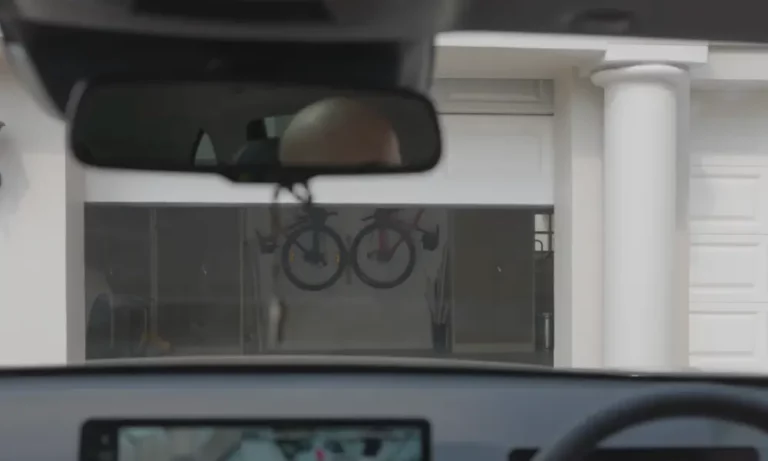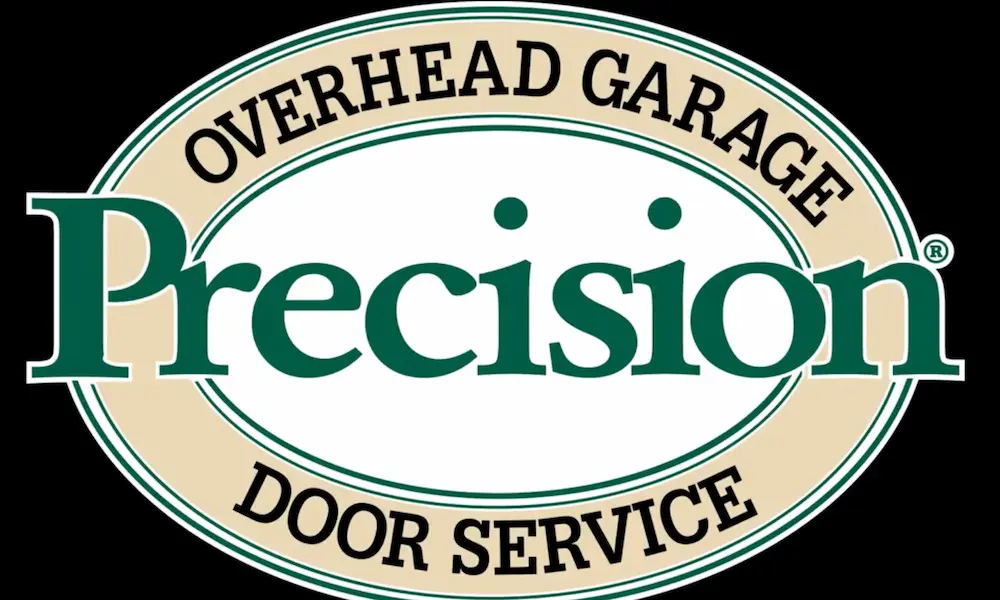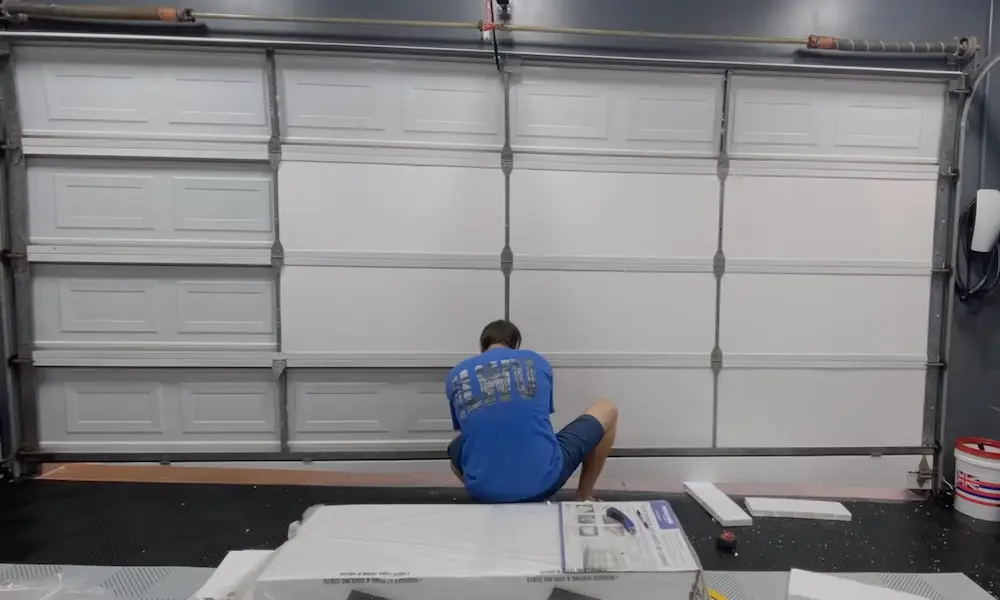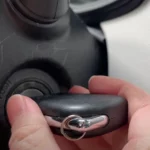Ever walked into your garage, hit the opener button, heard the familiar hum of the motor—but watched in confusion as your door stayed completely still? You’re facing one of the most common garage door problems: a motor that runs but doesn’t actually open the door.
This issue can range from a simple fix you can handle in minutes to something that requires professional help. Let’s break down why this happens and how to get your garage door moving again.
Disconnected Trolley: The Most Common Culprit
If your garage door motor is running but nothing’s happening, check your trolley system first.
The trolley is the part that connects your door to the motor’s drive mechanism. When someone pulls the emergency release cord (that red rope hanging from your opener track), it disconnects the door from the motor. This is designed for power outages so you can manually open your door—but it also means the motor will run without moving anything.
Quick fix: Look at your opener track and find the trolley. To reconnect it, pull the emergency release cord toward the opener (not downward). You might need to manually move your door halfway up to help it click back into place. When properly engaged, you’ll hear a click as the trolley locks back in.
Broken Springs: When Your Door Becomes Too Heavy
Garage door springs do the heavy lifting—literally. They counterbalance your door’s weight so the motor can move it easily.
When springs break, your door suddenly becomes extremely heavy. Your motor will run, trying its best to lift the door, but it simply doesn’t have enough power.
How to identify: Try manually lifting your door (after disconnecting it using the emergency release). If it feels unusually heavy or won’t stay up when raised halfway, you likely have broken springs.
Important safety warning: Never attempt to repair garage door springs yourself. They’re under extreme tension and can cause serious injury if mishandled. This job is strictly for professionals with proper training and tools.
Misaligned Tracks or Obstructions
Your garage door runs on metal tracks that guide its movement. If these tracks become misaligned, bent, or filled with debris, your door can get stuck.
DIY check: Visually inspect your tracks for obvious bending or debris. With the door disconnected, try manually moving it to feel for resistance or sticking points.
Common issues include:
- Dirt and debris buildup
- Bent track sections
- Loose mounting brackets
- Objects blocking the door’s path
Minor track cleaning and tightening loose bolts can be DIY projects, but significant track damage might require professional repair.
Safety Sensor Problems
Modern garage doors have safety sensors near the floor on both sides of the opening. When these get misaligned, dirty, or blocked, they can prevent operation.
While sensors typically affect door closing rather than opening, some systems restrict all movement when sensor issues are detected.
Simple fix: Clean both sensor lenses with a soft cloth and make sure they’re properly aligned with each other. Look for indicator lights on the sensors—if they’re blinking or not lit correctly, that confirms a sensor issue.
Chain or Belt Drive Problems
For chain-drive or belt-drive openers, issues with the drive mechanism itself can prevent door movement.
Common problems include:
- Loose chain/belt that needs tightening
- Broken chain links
- Chain jumped off the sprocket
- Belt wear or damage
Inspect your drive system while the motor runs (keeping fingers and clothing away from moving parts). A properly functioning chain/belt should move smoothly along the rail without jumping or making excessive noise.
Worn Internal Opener Components
After years of use, components inside your opener can wear out.
Stripped gears: Particularly in older units, the plastic or metal gears inside can strip. When this happens, the motor spins but doesn’t transfer power to the drive mechanism. You’ll often hear the motor running but with a different sound than normal.
Capacitor issues: The capacitor helps power your opener motor. When faulty, the motor might hum or run weakly without generating enough force to move your door.
These internal issues typically require opener repair or replacement.
DIY Troubleshooting Checklist
Before calling a pro, try these steps in order:
- Check power supply
- Ensure the opener is plugged in
- Verify the circuit breaker hasn’t tripped
- Try replacing remote batteries
- Inspect the trolley connection
- Look for a disconnected trolley
- Re-engage by pulling the red cord toward the opener
- Test door operation
- Test manual door operation
- Disconnect door from opener using emergency release
- Try lifting door manually
- If extremely heavy or sticking, note where and how
- Check safety sensors
- Clean both sensor lenses
- Check alignment (lights should be solid, not blinking)
- Remove any obstructions in the beam path
- Examine tracks and hardware
- Look for debris or damage in the tracks
- Check for loose hardware
- Listen for unusual sounds during operation attempts
| Issue | DIY Fixable? | Signs | First Step |
|---|---|---|---|
| Disconnected Trolley | ✅ Yes | Motor runs but trolley doesn’t move | Pull emergency release toward opener |
| Broken Springs | ❌ No | Door extremely heavy, won’t stay up manually | Call professional immediately |
| Track Issues | ⚠️ Sometimes | Door sticks when moving manually | Clean tracks, tighten hardware |
| Safety Sensors | ✅ Yes | Blinking lights on sensors | Clean lenses, check alignment |
| Stripped Gears | ❌ No | Different motor sound, no movement | Professional opener repair |
When to Call a Professional
Some garage door problems are beyond DIY solutions. Call a pro immediately for:
- Broken springs – Never attempt to replace these yourself due to high tension
- Significant track damage – Proper alignment requires specialized knowledge
- Internal opener damage – When gears or motor components are worn or broken
- Cable issues – Cables under tension are dangerous to handle
- Any repair you’re not comfortable tackling – Garage doors are heavy and potentially dangerous
Preventing Future Problems
Once your door is working again, these maintenance steps can help prevent similar issues:
- Monthly visual inspection of all components
- Lubrication of moving parts every 3-6 months
- Testing the emergency release occasionally
- Keeping tracks clean of debris
- Listening for unusual noises that might signal developing problems
Regular maintenance not only prevents inconvenient breakdowns but also extends your garage door system’s lifespan. A well-maintained door operates more smoothly, uses less energy, and is less likely to suffer catastrophic failures.
By understanding why your garage door motor might run without opening the door, you can quickly identify the problem and either fix it yourself or know when to call in the experts. Either way, you’ll be back to convenient, reliable garage door operation in no time.
















